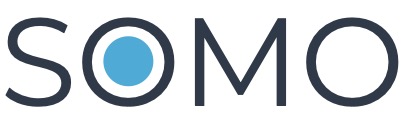Citizen Generated Data (CGD)
Importance of CGD in Community Development
1. Case Studies Highlighting the Successful Use of Community-Generated Data (CGD) in Community Projects
Overview: Community-Generated Data (CGD) has become an essential tool for local development, as it involves residents in collecting and using data to influence decisions in their communities. The following case studies demonstrate how CGD has been successfully used in areas such as urban planning, environmental monitoring, and social services improvement.
Case Study 1: Urban Planning in Kibera, Kenya
Background:
Kibera, one of the largest informal settlements in Africa, has historically lacked accurate data for planning and resource allocation. Local residents collaborated with non-governmental organizations (NGOs) to map the area and collect CGD, including infrastructure data such as road conditions, water points, and informal businesses.
Key Outcomes:
- Improved Urban Planning: Local authorities used the data to identify and prioritize infrastructure projects, such as road paving and water system upgrades.
- Community Engagement: The mapping process fostered a stronger sense of ownership among residents, making them active stakeholders in the community’s development.
- Long-term Impact: The data has continued to serve as a baseline for future planning initiatives and has been used by NGOs to secure further funding for development projects.
Case Study 2: Environmental Monitoring in the Amazon Rainforest
Background:
Indigenous communities in the Amazon rainforest have been using CGD to monitor deforestation and illegal logging activities. Equipped with smartphones and GPS devices, local residents collect data on forest cover changes and report illegal activities to local authorities and environmental NGOs.
Key Outcomes:
- Deforestation Reduction: The real-time data allowed authorities to respond quickly to illegal logging, reducing the rate of deforestation in key areas.
- Empowerment of Indigenous Communities: By participating in data collection, indigenous communities have become key players in the fight against environmental degradation, securing legal support for their territories.
- Policy Influence: The CGD generated has influenced both national and international environmental policies, and it is now integrated into larger environmental monitoring systems such as Global Forest Watch.
Case Study 3: Social Services Improvement in New York City
Background:
In New York City, CGD initiatives led by community organizations have been instrumental in identifying gaps in social services for marginalized populations, particularly in healthcare, housing, and education. Residents collected data on healthcare access, housing conditions, and educational resources through surveys and interviews.
Key Outcomes:
- Informed Policy Decisions: Local governments used the data to improve healthcare access by opening new community health centers in underserved areas.
- Housing Upgrades: CGD was used to identify substandard housing units, which led to improved housing policies and enforcement of housing codes.
- Educational Resources: Community-generated insights on education access informed after-school programs and targeted resources for struggling students, improving overall educational outcomes in the affected districts.
2. The Impact of CGD on Decision-Making Processes within Community-Based Organizations (CBOs) and Local Governments
Overview:
Community-Generated Data (CGD) has transformative potential for decision-making processes, especially within Community-Based Organizations (CBOs) and local governments. Here’s how CGD can shape more responsive, inclusive, and data-driven decision-making:
Empowering Local Communities:
CGD empowers residents and local stakeholders by providing a platform to voice their concerns, needs, and preferences. By directly involving the community in data collection, the data is more representative of actual lived experiences. This makes CBOs and local governments better equipped to address the issues that matter most to residents.
- Case Example: In a rural township in South Africa, a CGD initiative on water access collected data from residents about water shortages and infrastructure issues. The local government used this data to prioritize water distribution improvements in areas facing chronic shortages.
Enhancing Transparency and Accountability:
CGD promotes transparency by making data publicly available and understandable. This builds trust between the community and governing bodies, allowing residents to track how their data is being used and the results of subsequent actions taken.
- Case Example: In New Delhi, India, CGD gathered from air quality sensors in slum areas revealed severe pollution levels that had previously been underreported. The municipal government responded by implementing stricter pollution controls, and the publicly accessible data allowed residents to hold the government accountable.
Improving Service Delivery:
By providing real-time and hyper-local data, CGD can significantly improve how services such as health, education, and infrastructure are delivered. Local governments and CBOs can adjust their service delivery strategies based on the data, ensuring that resources are allocated where they are needed most.
- Case Example: In Brazil, CGD on access to maternal healthcare services collected through surveys of expecting mothers led to the establishment of mobile healthcare units in remote regions, improving maternal health outcomes.
Promoting Data-Driven Policy Making:
CGD enhances evidence-based policymaking by supplementing official statistics with granular, community-specific data. This data enables local governments to craft policies that are better tailored to the community’s actual conditions and challenges.
- Case Example: In the UK, CGD gathered on local transport usage by elderly citizens helped inform the city’s decision to expand free public transportation services, providing greater mobility for senior citizens.
3. Ethical Considerations and the Importance of Inclusivity and Diversity in CGD Initiatives
Overview:
Ethical considerations are crucial to the success and sustainability of Community-Generated Data (CGD) initiatives. Fostering inclusivity and diversity in CGD is essential for ensuring that the data collected is representative, fair, and beneficial to the entire community.
Ethical Considerations:
-
Informed Consent & Privacy:
- Communities should be fully aware of how their data will be collected, used, and shared. Proper mechanisms must be in place to protect personal data and respect individuals’ privacy.
- Example: In a CGD initiative in Brazil’s favelas, residents were informed about how their data on healthcare access would be used to influence health policy, and they were given the option to participate anonymously.
-
Data Ownership:
- The community should retain ownership of the data they collect. Too often, data is extracted from communities without offering them control or access to how it’s used.
- Example: In a project monitoring fish stocks along the Kenyan coastline, local fishers retained ownership of the data and could decide how to share it with authorities or external organizations.
-
Avoiding Data Misuse:
- Safeguards must be in place to prevent CGD from being misused for commercial or political gain at the expense of the community.
- Example: CGD on land use in a Tanzanian village was initially sought by a private company for development purposes, but with community control of the data, the village was able to negotiate terms that protected their land rights.
The Importance of Inclusivity & Diversity:
-
Inclusive Data Collection:
- CGD must be inclusive of all groups within the community, especially marginalized populations (e.g., women, minorities, elderly, disabled). This ensures that the data accurately reflects the needs and experiences of everyone, not just dominant groups.
- Example: In a CGD project addressing urban mobility in Bogotá, Colombia, extra effort was made to include data from women, elderly, and disabled individuals to ensure that transportation solutions were designed for all.
-
Diverse Perspectives:
- Incorporating diverse perspectives in data collection and analysis leads to more innovative and effective solutions. Community members from different backgrounds and demographics often see problems and solutions in unique ways.
- Example: A CGD initiative to map flood-prone areas in Bangladesh involved youth, elders, and women in the data collection process, resulting in a more comprehensive understanding of risk factors across the community.
-
Cultural Sensitivity:
- CGD projects must respect local cultures and practices. Data collection methods should be aligned with cultural norms, and engagement should honor local traditions and values.
- Example: A project on agricultural practices in rural India adjusted its survey methods to include oral storytelling traditions when collecting data from older farmers who were not literate.

